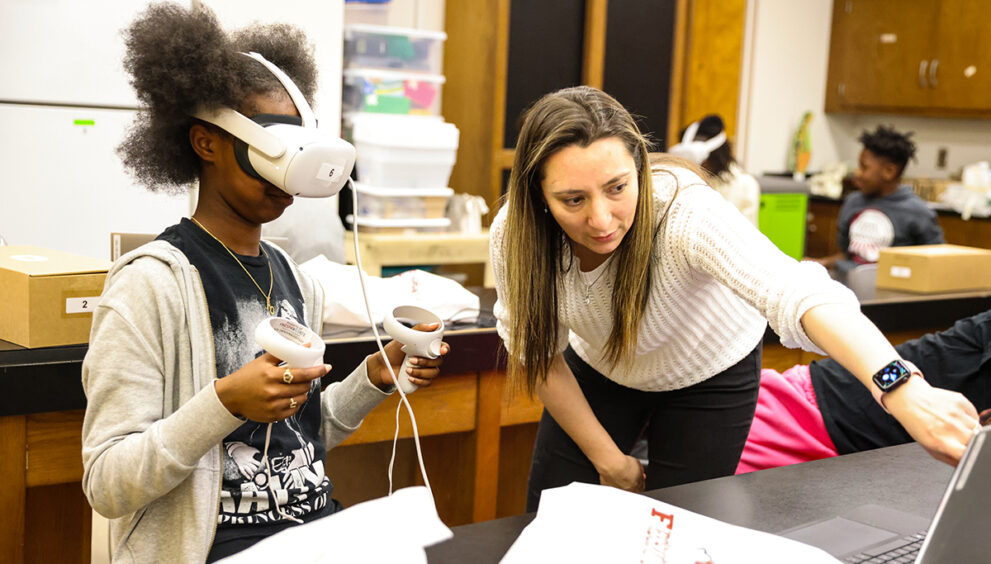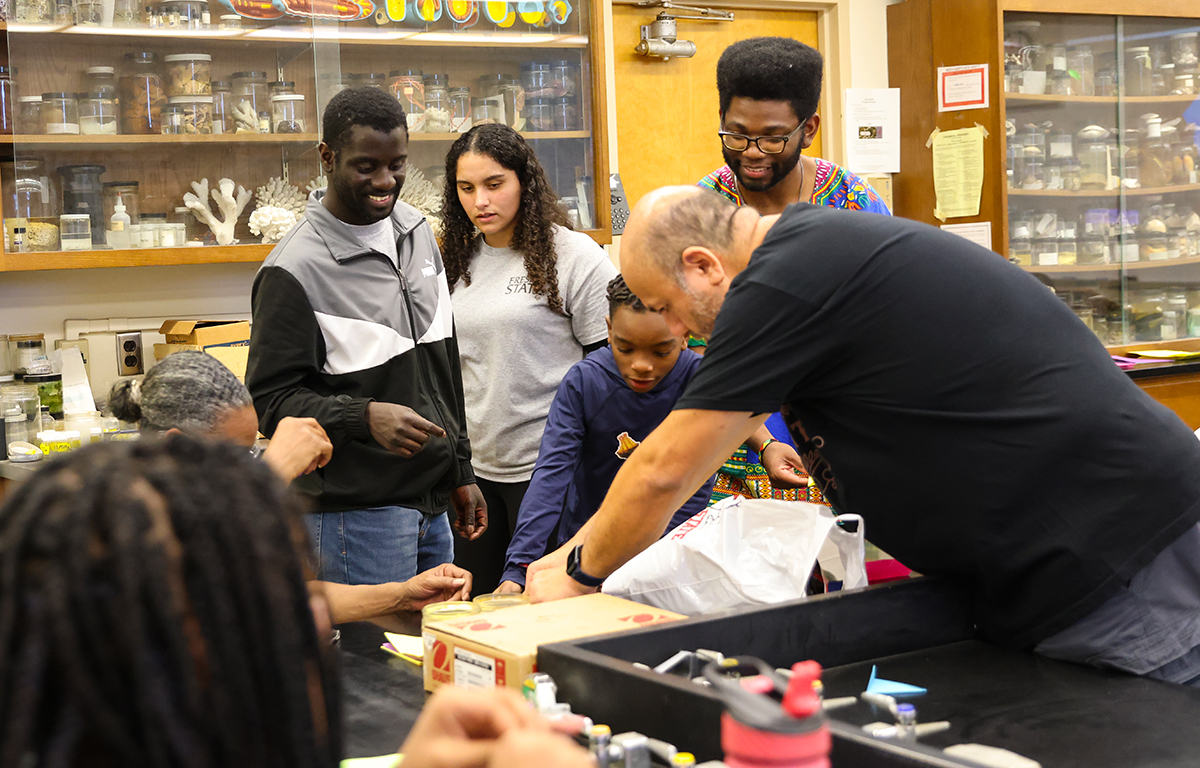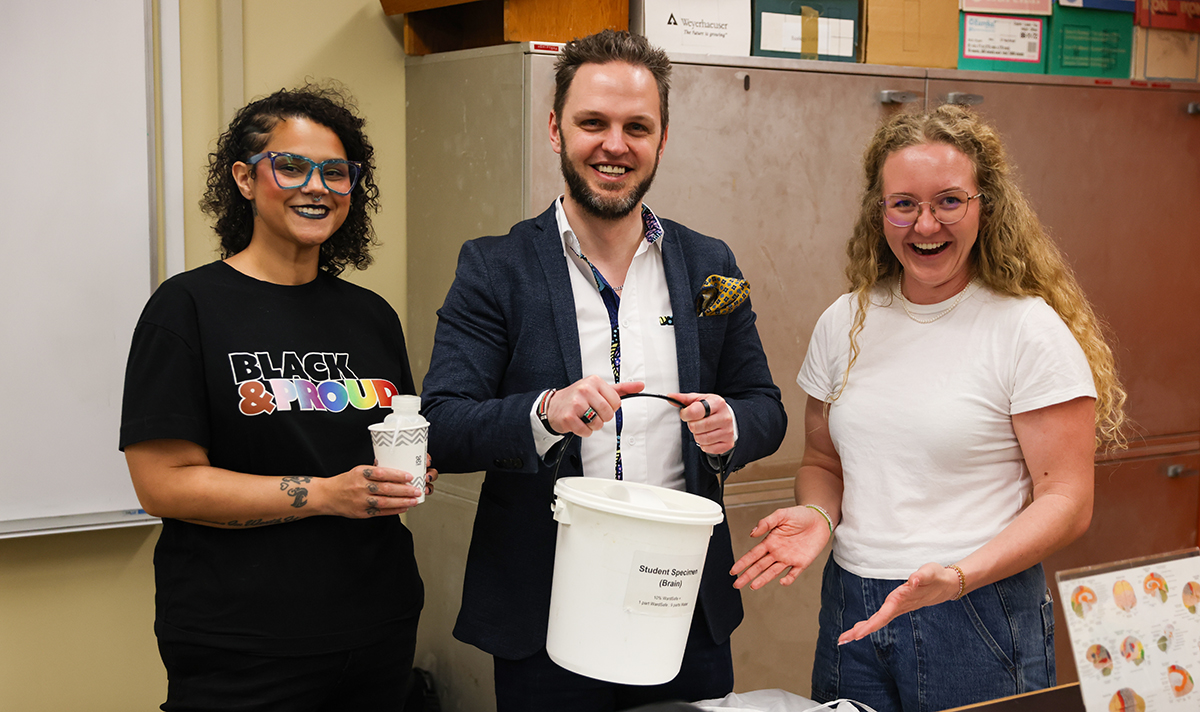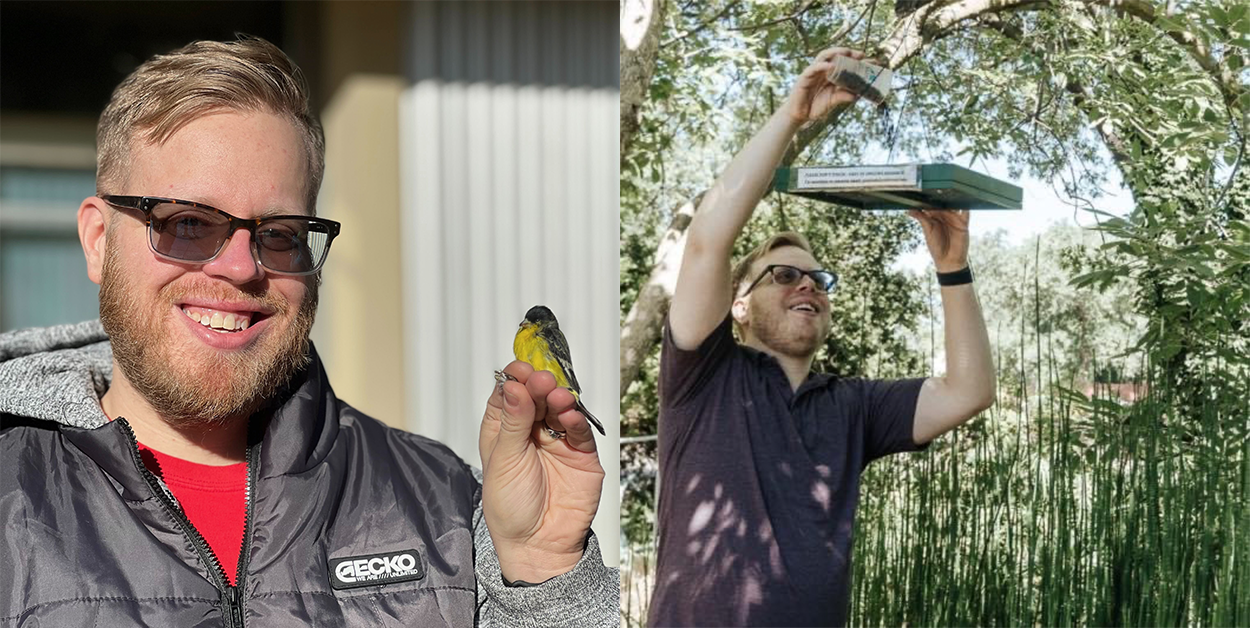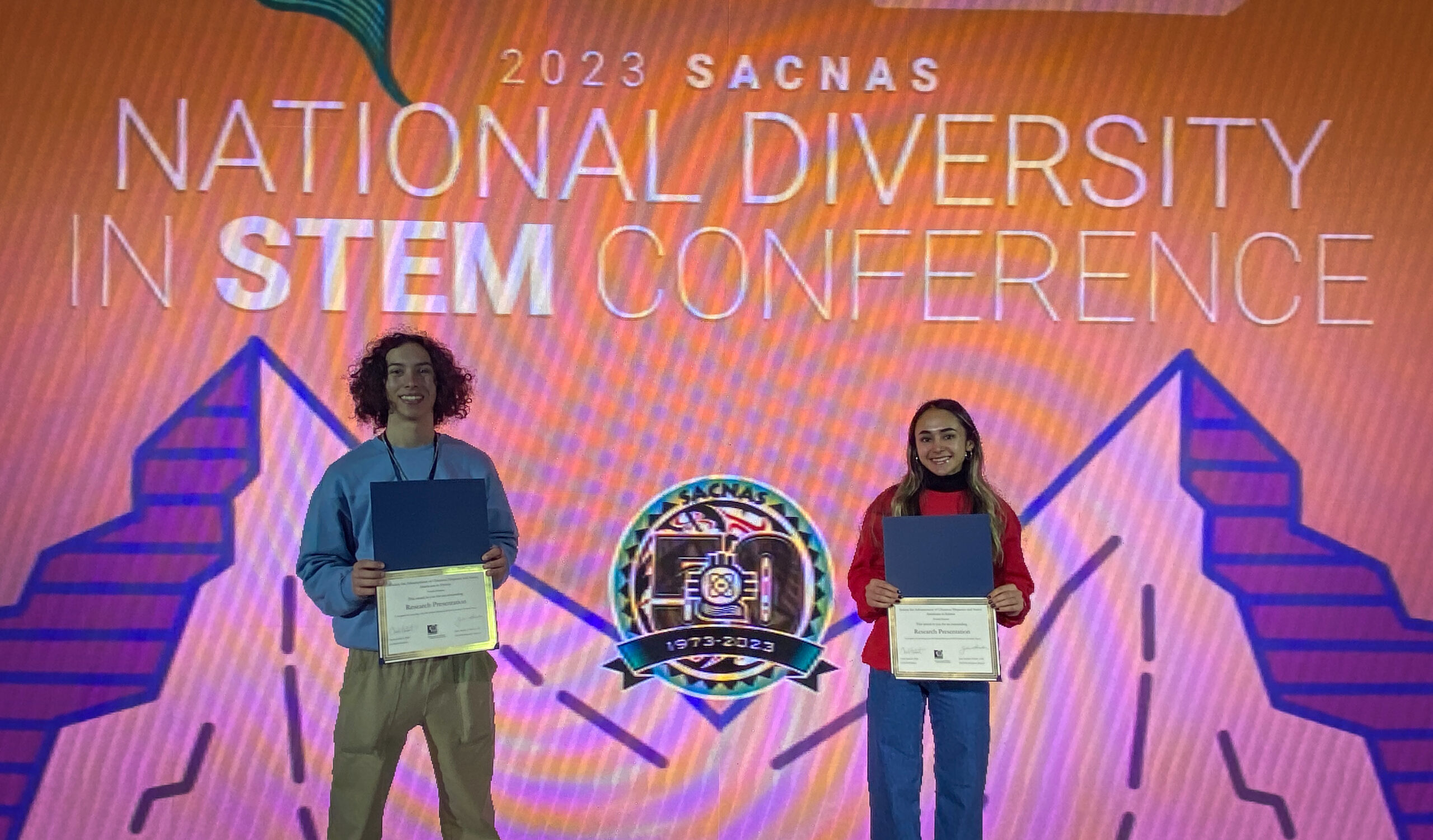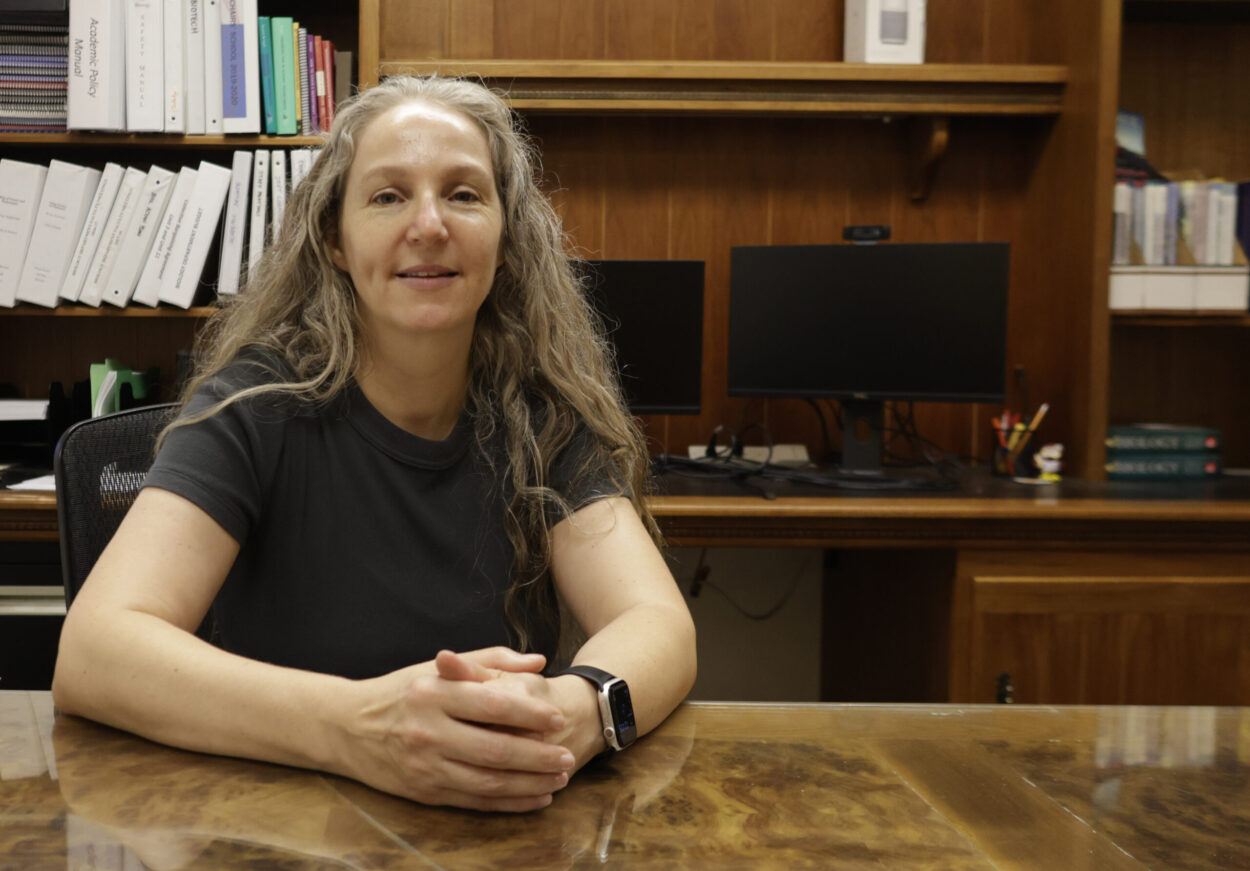Middle school students had the opportunity to explore the world of science through a series of workshops at the Black Excellence in Science and Technology (BEST) Science Saturday event on Feb 24.
The event served Black and Indigenous students between 6th and 8th grades. These aspiring scientists engaged with the College of Science and Mathematics professors and students in a hands-on learning environment, delving into biology, chemistry, math, computer science, and neuroscience.
Jordan Humprey, an 8th grader from Thomas Jefferson Middle School in Madera, said this was his third time attending the seminar.
Psychology professor Dr. Chris Miller, who gave a presentation about the brain, remembered Humprey and praised him as an excellent student with scientific aspirations.
Besides learning about its complexity, the students had an opportunity to hold a brain specimen, feel its texture, and look at the different parts.
Miller said Science Saturday was a rewarding experience for students and faculty involved.
“Science Saturday is a terrific opportunity for Black and Indigenous students from the Central Valley region to engage in immersive STEM learning experiences in a highly supportive atmosphere on the Fresno State campus with faculty and students who are deeply committed to both science education and social justice,” Miller said.
Mathematics professor Dr. Oscar Vega introduced the students to math origami, an intriguing fusion of art and science, where the ancient Japanese art of paper folding meets geometric and mathematical principles.
The technique is a visual method to explore and understand mathematical concepts such as symmetry and transformations, and it could help to solve complex equations.
Biology Professors Dr. Anahit Hovhannisyan and Dr. David Lent engaged the students in virtual reality (VR). The students experienced wearing Oculus VR headsets and navigated syGlass technology. syGlass is a VR software that allows users to explore complex scientific images and data, making research and learning more interactive and engaging.
Hovhannisyan said she was impressed by how easily the middle school students adapted to the headsets and managed to manipulate models on the computer using the handsets.
Before attending various lab sessions, the students toured the Fresno State winery, where they witnessed the winemaking process.
Aida Mendoza Sanchez, a 7th grader at Martin Luther King Middle School in Madera, said visiting the winery was the highlight of her day.
“I just like the smell, Sanchez said.
Mendoza said the tour involved showing the students the wine bottling process, among other experiences.
Biology professor Dr. Larry Riley organized the event through the Black Excellence in Science and Technology Club (BEST) in collaboration with Fresno State’s Black Student Success Initiative and Center for Access to Science For All (CASA).
This initiative aimed to enrich the student’s knowledge and inspire a new generation of scientists. Besides gaining knowledge, participants received T-shirts and swag and attended a Fresno State Bulldogs basketball game at the Savemart Center.
Science in Black History
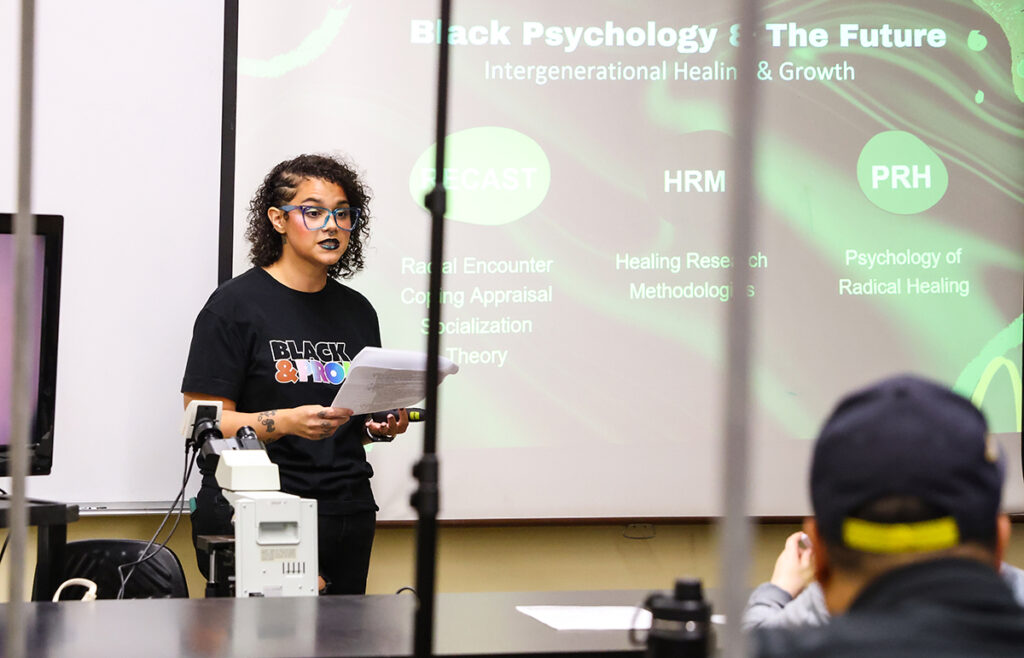
While most of the presentations leaned toward science, prospective psychology graduate student Ellie Jonhson-Venegas gave an eye-opening historical presentation about famous Black psychologists who have made tremendous contributions to their field.
The list included the wife and husband duo of Drs Mamie Philip Clark and Kenneth Clark, who played a crucial role in the 1954 landmark Brown vs. Board of Education antisegregation case. Using black and white dolls, the Clarks observed that African-American children favored white dolls and associated them with positive qualities, negatively perceiving black dolls.
The Clarks’ work provided empirical evidence that segregation was harmful to the psychological development of African-American children, supporting the argument that “separate but equal” schools, as established by Plessy v. Ferguson (1896), were inherently unequal.
The U.S. Supreme Court declared racial segregation in public schools unconstitutional because it violates the Equal Protection Clause of the Fourteenth Amendment, stating that “separate educational facilities are inherently unequal.”
Miller is hopeful about the future.
“We hope that this annual event, in combination with other existing and emerging programs, will serve to expand support for our Black and Indigenous students, strengthen racial equity in STEM higher education and workforces, and provide us as faculty with continued opportunities to learn from our students,” Miller said.
More than 50 students from Madera Unified School District, Chowchilla Unified School District, Sanger Unified School District, West Fresno Middle School, and Fresno Unified School District attended the conference.
BEST is on a mission to actively advance racial equity, inclusion, and belonging in STEM education and to increase workforce diversity by creating innovative STEM programs for Black and Indigenous students.
Riley is optimistic about the future.
“We’ll see you next year at the BEST Science Saturday 2025,” Riley said.
